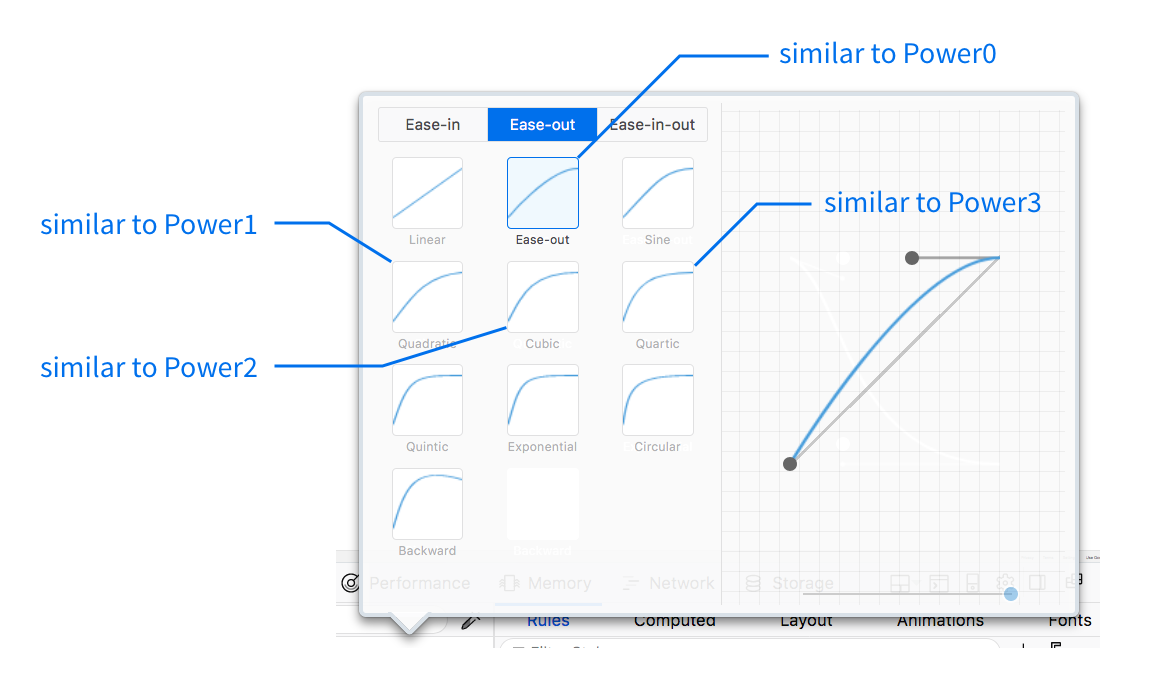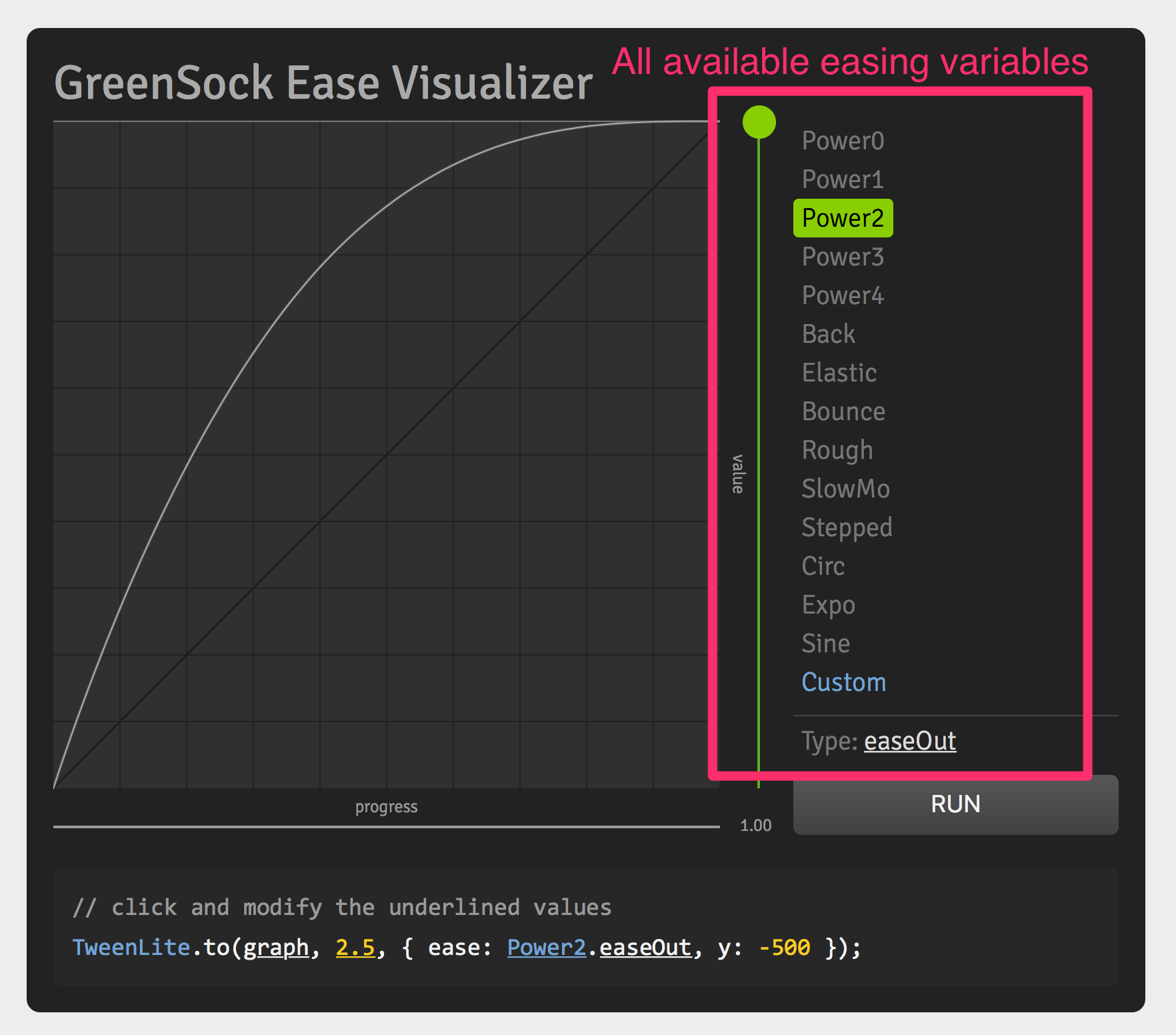An introduction to animations with Greensock Animation API (GSAP)
Greensock Animation API (GSAP) is an animation library that helps you create performant animations. It can be used safely (back to IE6!) to create animations without jank, and it’s the only animation library (as far as I know) that handles SVG animations seamlessly.
Many animation experts, like Sarah Drasner and Chris Gannon, use and recommend GSAP.
In this article, you’ll learn how to use GSAP to build simple animations.
TweenMax and TimelineMax
GSAP lets you choose from four libraries—TweenLite, TweenMax, TimelineLite and TimelineMax; TweenMax has more features than TweenLite; TimelineMax has more features than TimelineLite.
Since you’re learning about GSAP for the first time, let’s optimize for learning and use TweenMax; it includes almost everything you’ll ever need (including TimelineMax).
If you’re worried about file size, you can optimize your assets for production by choosing the right libraries later. For now, let’s stick with learning.
Installing GSAP
To install GSAP in your project, you need to include the library before you include your JavaScript file. The process looks like this:
<!-- Link to GSAP --><script src="https://cdnjs.cloudflare.com/ajax/libs/gsap/1.20.3/TweenMax.min.js"></script>
<!-- Your main JavaScript comes next --><script src="main.js"></script>First, what’s a Tween?
A tween is a single movement in an animation. In GSAP, a tween has the following syntax:
TweenMax.method(element, duration, vars)method refers to the GSAP method you’ll like to tween with.
element is the element you want to animate. If you want to create tweens for multiple elements at the same time, you can pass in an array of elements to element.
duration is the duration of your tween. It is an integer in seconds (without the s suffix!).
vars is an object of the properties you want to animate. More on this later.
GSAP methods
GSAP lets you animate with many methods. When you’re new, the ones you’ll use most are:
setfromto
set sets the vars object to the specified values without creating an animation.
from animates the element from the values you set in vars to their current values.
to animates the element from their current values to the values you set in vars.
GSAP vars
vars is an object that lets you specify the properties you want to animate. You can specify any CSS property here. Just switch the CSS naming format into camel case.
For example, if you want to animate the font-size property, you change font-size into fontSize.
const vars = { fontSize: '20px', backgroundColor: '#40eefa',}GSAP also lets you animate CSS transforms. The syntax here is slightly different though:
- For
translateX, you usex. - For
translateY, you usey. - For
rotate, you userotation.
const vars = { x: 200, // Translates 200px from left to right y: -200 // Translates 200px from bottom to top rotation: 90 // Rotates 90 degrees}When you use x, y and rotation, GSAP uses CSS transform matrix to calculate the tween.
In case you are wondering, there is no need to understand CSS Transform matrix because you’ll probably not want to hand-write one. It’s unbelievably complicated.
Is there a documentation that contains all animate-able properties?
Unfortunately, no. There isn’t a documentation that contains all animate-able properties. The good news is, you won’t need such a documentation because GSAP can animate any animate-able CSS property. As long as you can use CSS Transitions on the property, GSAP can handle it for you.
By the way, even though GSAP is super fast, you can’t stop jank from happening if you animate CSS properties other than transform and opacity. So don’t animate other CSS properties unnecessarily.
Let’s start tweening
Let’s say you have a box. You want to move the box from the left to the right over 2 seconds.
To do so, you use the to method because you want to move the box to the right. In vars object, you specify the x property (translateX) to move things horizontally.
const box = document.querySelector('.box')TweenMax.to(box, 2, { x: 400 })
Here’s another example: let’s say you want the box from the bottom to it’s current position. The box should be invisible at first; it fades in and becomes fully visible at the end of the animation.
To do so, you use the from method because you want to move the box from the bottom. In the vars object, you specify the y property to move things vertically. You also specify opacity to make the box fade in.
const box = document.querySelector('.box')TweenMax.from(box, 2, { y: 100, opacity: 0,})
Timing functions
Like CSS Transitions and CSS Animations, you can create timing functions for each of your tweens. The syntax is slightly different though.
In GSAP, you write the timing functions as the ease property.
const vars = { ease: Power0.easeOut,}GSAP provides you with many easing variables like Power0, Power1, Power2, Power3 and Power4. These easing variables tell GSAP how strong the easing needs to be.
Power0 gives you the normal ease-in and ease-out values, Power1 gives you the quadratic ease-in and ease-out values, and Power2 gives you the cubic ease-in and cubic ease-out values, and so on.
If you use Firefox’s devtools, you can roughly estimate what Power0 to Power4 looks like.

Besides Power0 to Power4, GSAP gives you other easing variables, like Bounce and Elastic, that are more powerful than to cubic-bezier curves—they let you create animations that you can’t do with cubic-bezier!
One example is a bouncing animation. Click the ball in the codepen below and you’ll see the ball bounce!.
See the Pen Bouncing ball animation by Zell Liew (@zellwk) on CodePen.
The Easing visualizer
To find the perfect timing-function for your tweens, you can use the easing visualizer that GSAP has created. Here, you’ll find a complete list of possible easing variables.

You can also customize easing properties and see how it looks like immediately.

If you want to create animations that look good, you need to go through different possible timing-functions and find the perfect one. There’s no substitute for experimentation here, so experiment away! GSAP has already made it easy for you!
Multiple Tweens at the same time
You can Tween an element with two different sets of vars at the same time. To do so, you create two tweens, like this:
const ball = document.querySelector('svg g')
ball.addEventListener('click', e => { TweenMax.to(ball, 2.5, { x: 600, rotation: 720, transformOrigin: '50% 50%', ease: 'Power1.easeOut', }) TweenMax.to(ball, 2, { y: 400, ease: 'Bounce.easeOut', })})
See this codepen if you want to click on the ball yourself.
If you want to start the second tween after the first tween is done, you need to set a delay value in the second tween with the delay property.
const box = document.querySelector('box')TweenMax.to(box, 1, { x: 200 })TweenMax.to(box, 1, { y: 200, delay: 1 })
Setting delay like this is easy if you only use a few tweens. However, it becomes unwieldy quickly.
This is where TimelineMax comes in to help.
Chaining Tweens with TimelineMax
TimelineMax lets you chain tweens together. When you do so, the second tween starts after the first tween completes; the third tween starts after the second tween completes.
To create a TimelineMax instance, you write new TimelineMax({}).
const tl = new TimelineMax({})Once you’ve created a timeline, treat the new tl variable as TweenMax and continue doing whatever you did previously.
const tl = new TimelineMax({})tl.to(box, 1, { x: 200 })tl.to(box, 1, { y: 200 })What you’ll notice is, without the delay, the second tween (moving vertically) gets attached to the end of the first tween automatically. Isn’t that sweet?!

Check this codepen for a demo.
That’s it for a basic intro to the Greensock Animation API (GSAP). There’s way more to TweenMax and TimelineMax that you’ve learned in this lesson. Feel free to explore what you can do with them (or wait till you learn more when you build components).
Wrapping up
GSAP is a library that lets you create animations with JavaScript. It contains four possible libraries—TweenLite, TweenMax, TimelineLite and TimelineMax.
To create a tween, you specify three things—the element you want to tween, the duration of the tween, and the vars object—in the to or from methods.
You can create multiple tweens that start at the same time by simply writing two tweens. To chain tweens together, you can use TimelineMax.
I hope this article has been useful to help you learn GSAP.
If you loved this article, you’ll love learn Learn JavaScript—a course that helps you learn to build real components from scratch with Javascript. Click here to find out more about Learn JavaScript if you’re interested.
